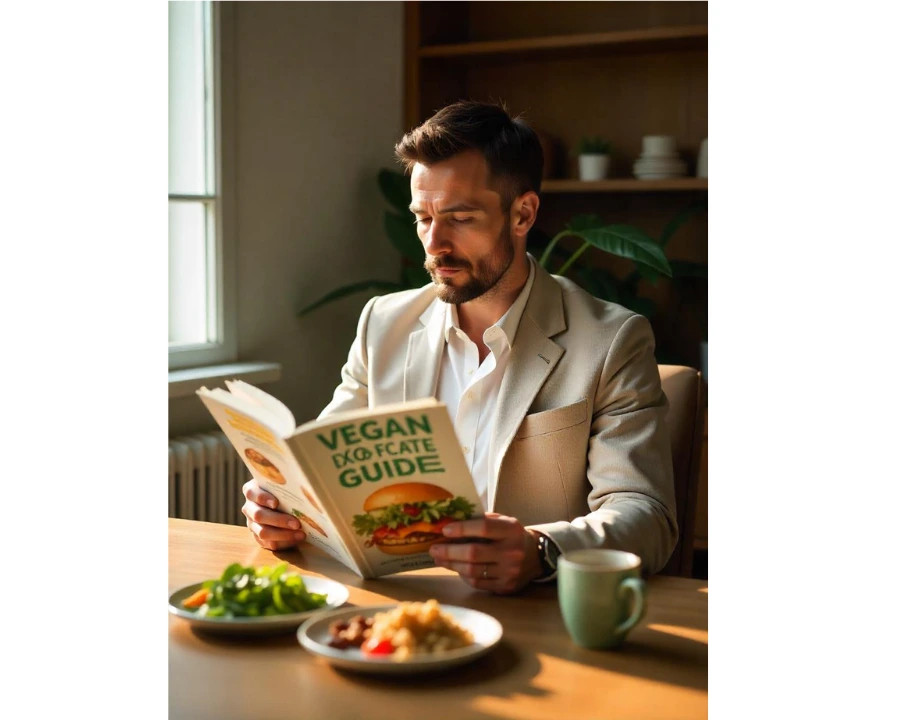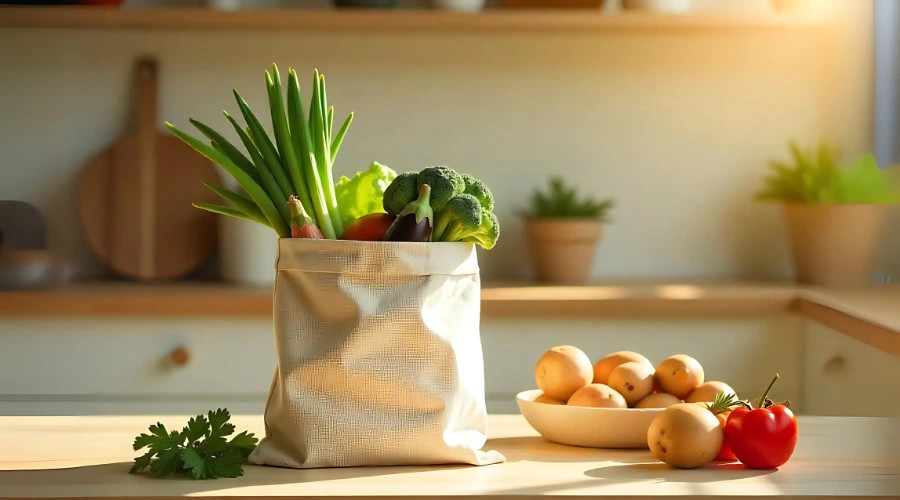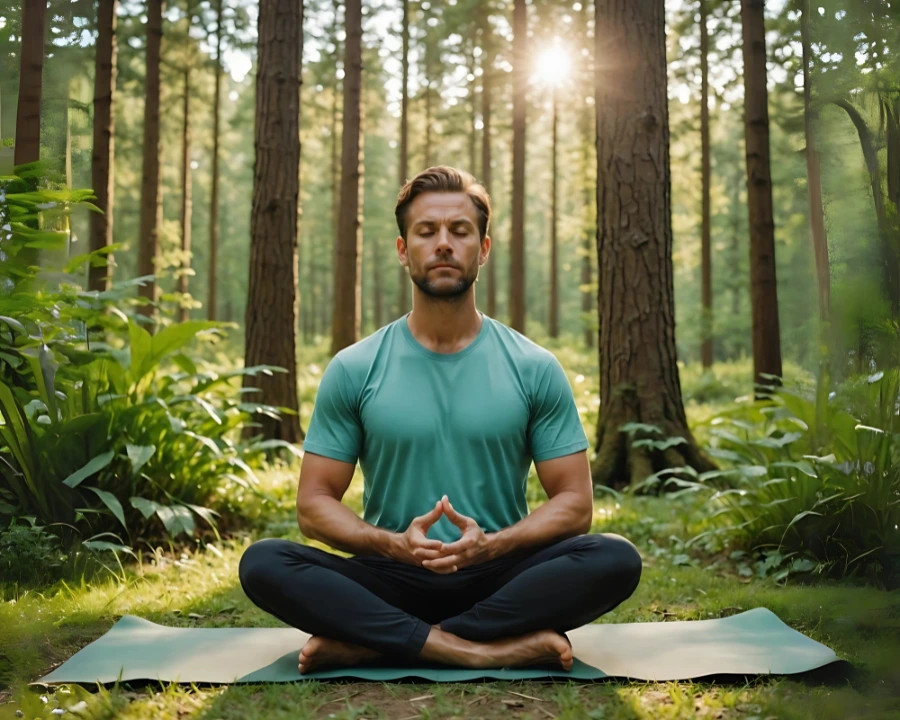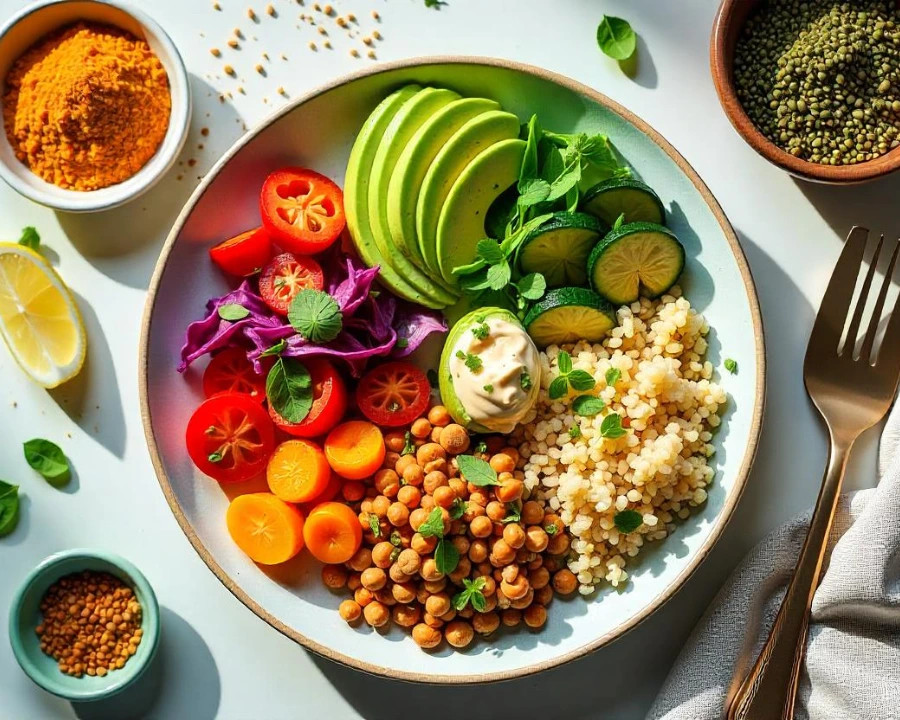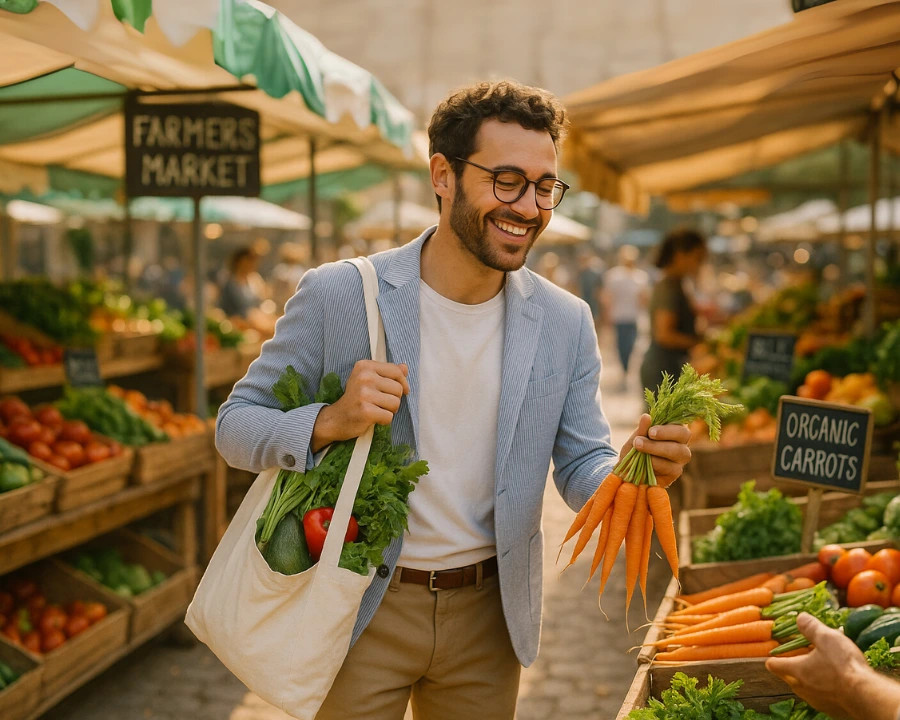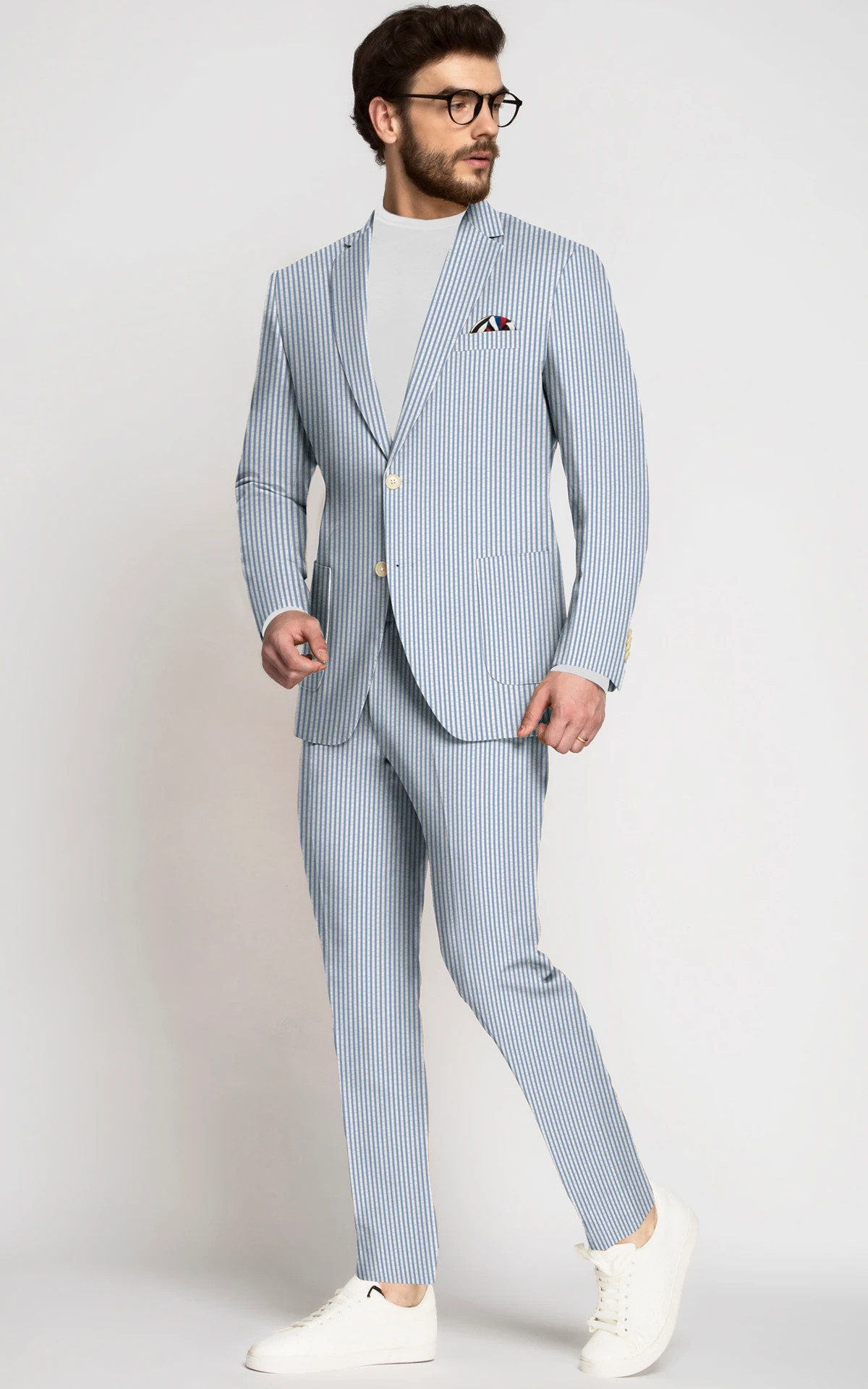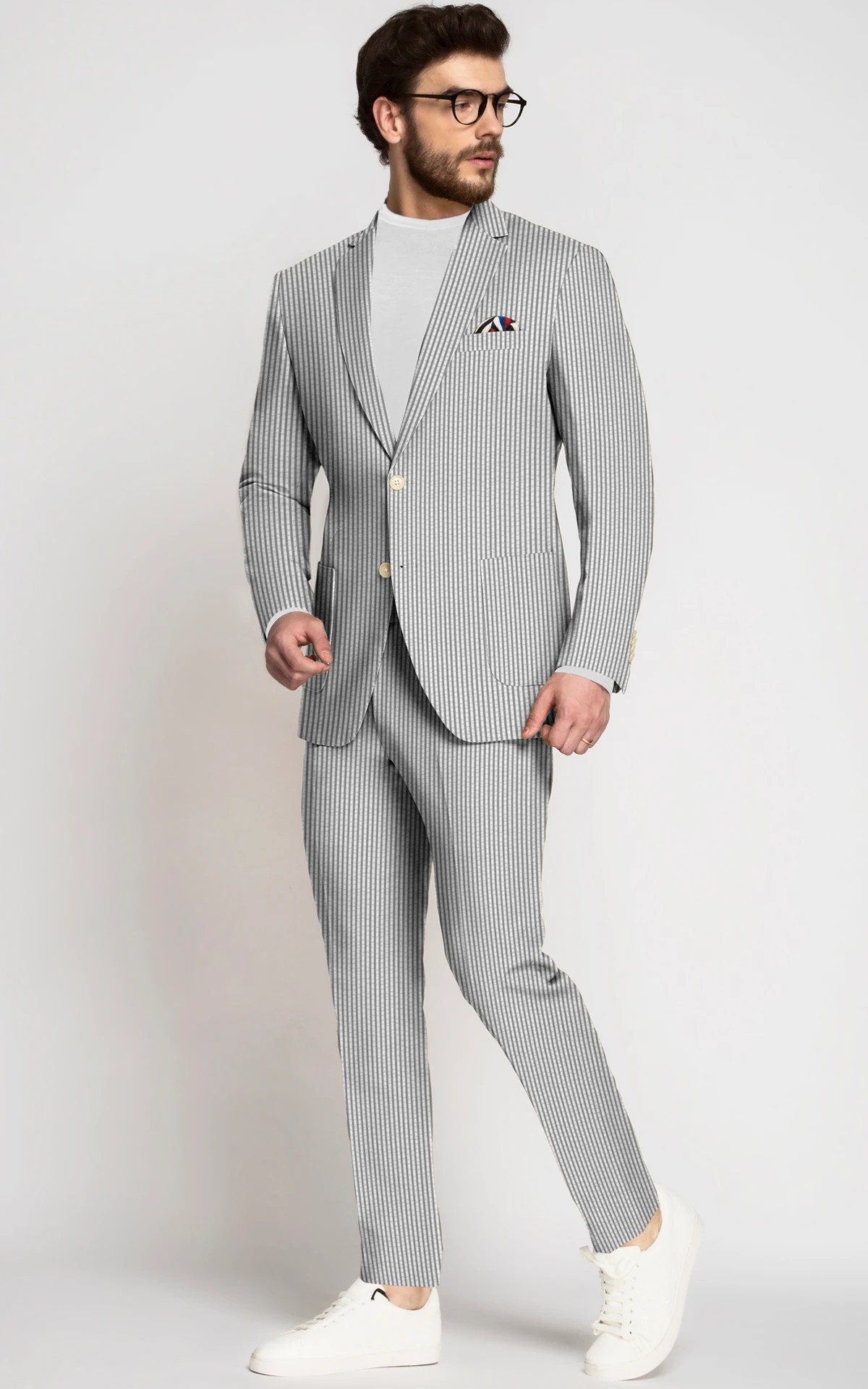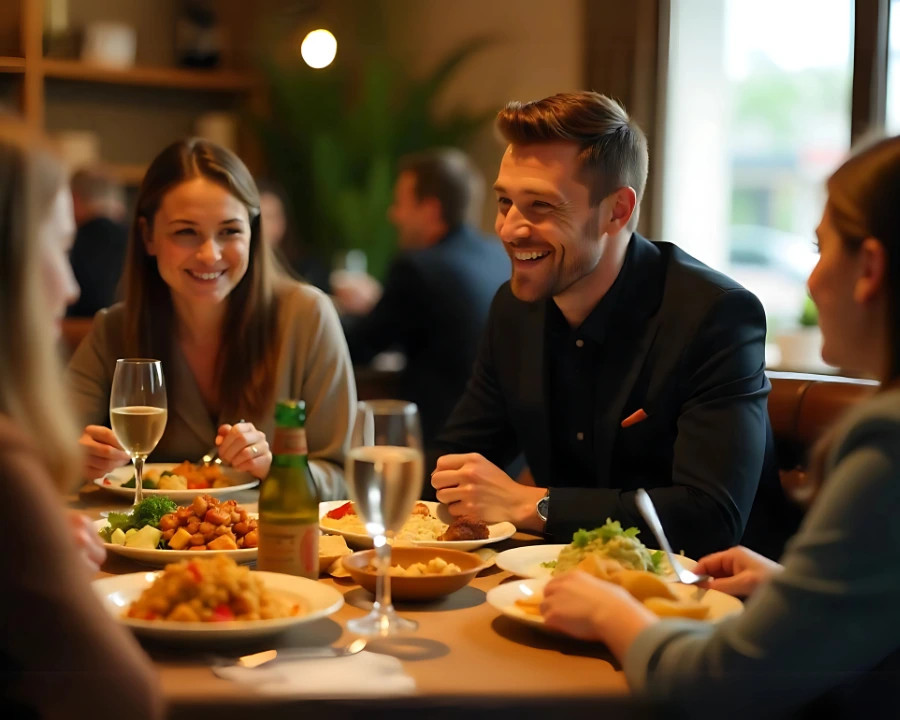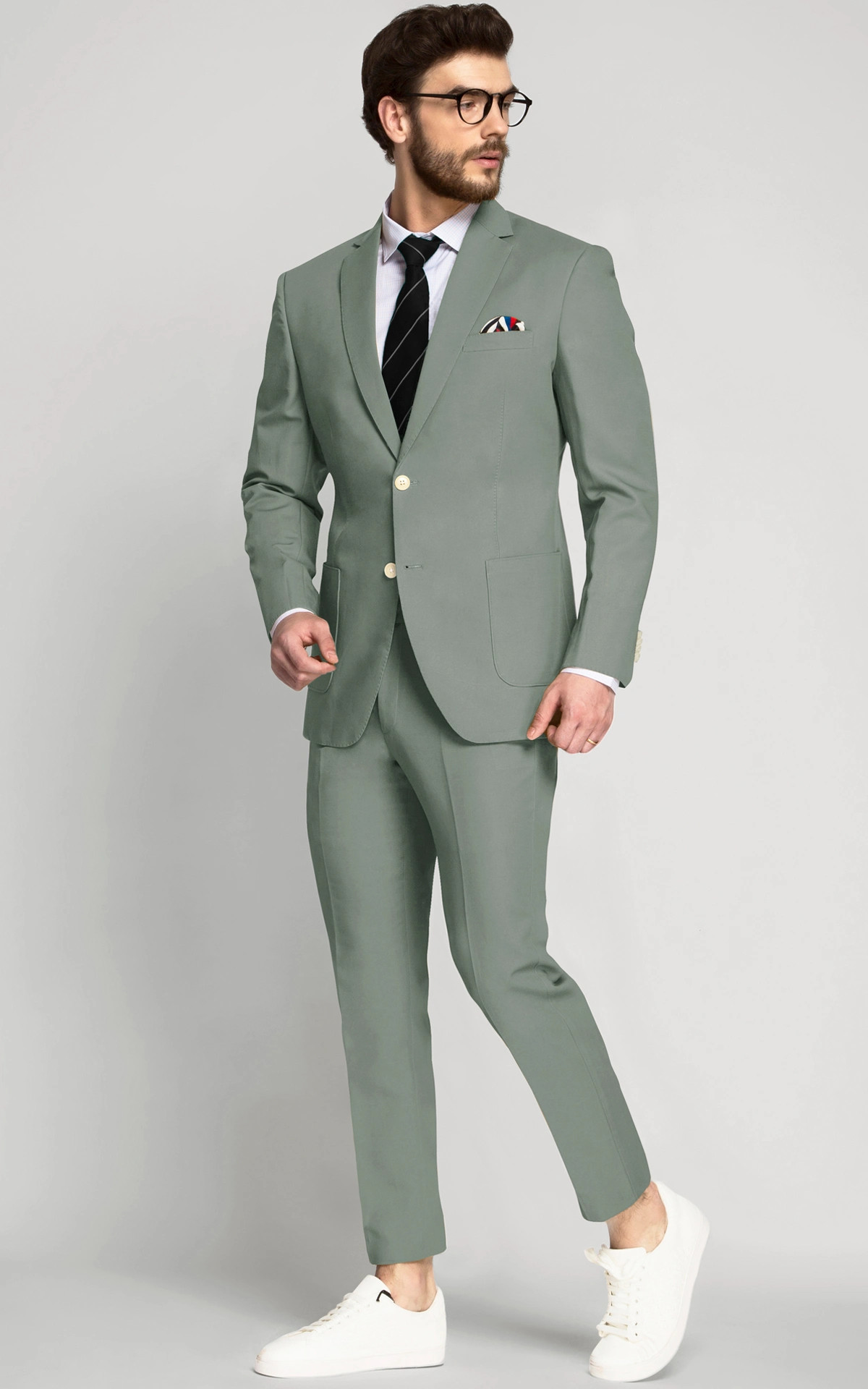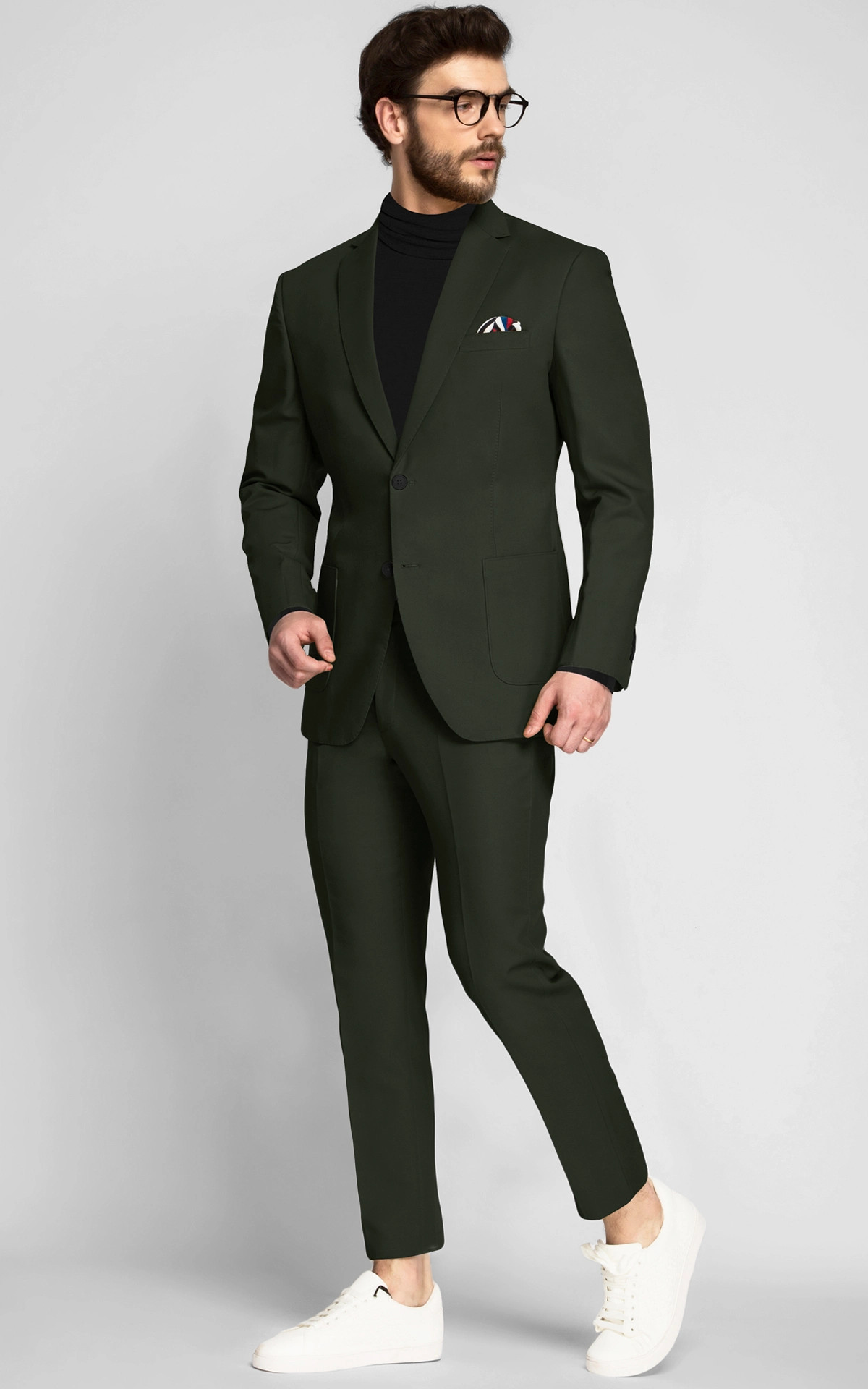How To Go Vegan: The Ultimate Beginner’s Guide
Share:
Have you ever felt a tug at your conscience while biting into your favorite meal? Or caught yourself wondering if your choices—however small—could make a bigger impact on the world? You’re not alone.
The decision to go Vegan isn’t just about switching what’s on your plate—it’s a profound internal shift. It’s about realigning your actions with your values, rethinking long-held beliefs, and often, navigating emotional, cultural, and social attachments to food. And that’s no small feat.
Going vegan is a journey, not a switch. It's about gradually creating harmony between your heart, mind, and daily life. Whether you’re driven by compassion, sustainability, wellness, or curiosity, we’re here to walk with you—step by step, no guilt, no pressure—just honest guidance and real support. Let’s begin.
Leading With Heart: Nurturing Your Vegan Mindset
Before you change your meals, you need to change your mind.That’s not a dramatic statement—it’s a deeply human truth. Going vegan isn’t just about what you eat; it’s about how you think, how you feel, and how you see yourself in relation to the world. And like all meaningful change, it starts in the mind.
Letting Go of "All-or-Nothing" Thinking
One of the biggest psychological hurdles when transitioning to veganism is the pressure to be perfect. Many people feel they have to either go 100% vegan overnight or not try at all. This kind of "all-or-nothing" mindset is rooted in fear—fear of failing, fear of judgment, fear of not being “vegan enough.”
But here’s the truth: progress always trumps perfection. Think of it like learning a new language. Would you expect to be fluent in a week? No. You’d stumble, mispronounce words, get corrected, and learn. Veganism is no different. Your mindset should focus on growth, not guilt. Every plant-based meal is a step forward—not a test of your worth.
Rewiring Habits and Emotional Attachments
Food isn’t just fuel. It’s comfort. It’s culture. It’s memory. And transitioning to a vegan lifestyle can feel, at first, like saying goodbye to a part of your identity. That’s perfectly normal.
This is where habit loops come in. We do build emotional attachments to certain foods over time—associating them with family, holidays, rewards, or even stress relief. Breaking these loops doesn’t happen through willpower alone—it happens through awareness, intention, and creating new positive associations.
Instead of mourning what you’re giving up, focus on what you’re gaining: new flavors, new traditions, a stronger alignment with your values, and a sense of personal growth.
Cultivating a Resilient Vegan Identity
Our brains are wired for consistency. Once we identify as something—“I’m a runner,” “I’m a reader,” “I’m vegan”—our actions naturally start aligning with that identity. But getting there takes time and repetition.
Start small. Tell yourself: “I’m someone who’s learning to live more compassionately.” With every choice you make, you reinforce that identity. Celebrate the small wins. Journal your experiences. Talk to others on the same path. Over time, being vegan won't feel like something you’re trying to do—it’ll feel like part of who you are.
Live Your Vegan Identity, Not Just in Food, but in Every Choice You Make.
Wear Your Values. Live Vegan!
Why People Go Vegan
Once your mindset is in the right place, the next step is uncovering your why. Why are you considering this change?
As Dr. T. Colin Campbell, a leading nutrition expert and author of The China Study, states, “The foods you eat can either be the safest and most powerful form of medicine or the slowest form of poison.”
Knowing your personal reason helps anchor you. It becomes your motivation on the hard days and your compass when things feel confusing. For most people, the why falls into three main areas—health, ethics, and the planet.
1. Health- Many start their vegan journey to feel better—physically and mentally. A well-balanced plant-based diet can help with energy levels, digestion, heart health, and even weight management. You’re fueling your body with whole, nutrient-rich foods—and that feels good from the inside out.
2. Ethics- Others are driven by compassion. They choose veganism because they no longer want to support industries that harm animals. It’s not about being perfect—it’s about doing less harm and aligning your actions with your values.
3. The Planet- And then there’s the environment. Our food choices impact land, water, and the climate. Going vegan is one of the most effective ways to lower your carbon footprint and reduce strain on natural resources.
Take a moment to reflect: What’s your reason? It doesn’t have to fit neatly into one box. It might be a mix of all three—or something deeply personal. Whatever it is, hold onto it. Your why is your anchor. And it will keep you grounded as you keep growing.
Find Your Flow: Three Empowering Ways to Go Vegan
So, you’ve got your mindset. You’ve connected to your why. Now comes the big question—how do you actually begin?
Here’s the truth: there’s no one-size-fits-all approach to going vegan. The key is to start in a way that feels natural and sustainable for you. Some people love diving in headfirst. Others prefer easing in gradually. And both are totally valid.
Let’s explore three powerful paths to help you find your flow:
1. The Gradual Shift
Perfect if: You’re overwhelmed by change or want to build new habits slowly.
Start by making small swaps: oat milk instead of dairy, veggie bowls instead of meat-based meals, plant-based snacks you enjoy. Tackle one meal at a time—maybe go vegan for breakfast for a week, then lunch the next. This approach lets you ease in with confidence, giving your taste buds and lifestyle time to adjust. Every small step counts—and adds up to something big.
2. The 30-Day Challenge
Perfect if: You’re curious, motivated, and love structure.
Committing to a 30-day vegan challenge is a great way to dive in without the pressure of “forever.” It creates a focused, short-term goal where you can explore recipes, learn about labels, and build your routine. By the end of the month, you’ll feel more informed and connected to your choices—and you’ll know what feels sustainable moving forward.
3. The All-In Approach
Perfect if: You’re driven by purpose, deeply motivated, and ready for a reset.
Some people thrive by making the leap all at once. If your why is strong and your heart is fully in it, diving in can feel incredibly empowering. Just make sure you’re equipped—read labels, stock your pantry, learn about nutrition, and give yourself grace as you adjust. Whichever path you choose, the most important thing is this: keep going. There’s no timeline, no test, and no “right” way—just your way. The more you stay connected to your why, the easier it becomes to make compassionate, empowered choices that last.
How to Keep Your Cool While Going Cruelty-Free
Transitioning to veganism is exciting, empowering, and life-changing—but it can also feel overwhelming. New habits, new foods, and sometimes, a new sense of identity. It’s easy to get caught up in the pressure to do everything perfectly. But let’s get one thing straight: staying calm is just as important as staying committed.
Here’s how to maintain your balance while navigating this life shift:
1. Give Yourself Grace—It’s a Journey, Not a Race -The most important thing to remember is that this transition isn’t about perfection. There will be times when you slip up, or when old habits creep in. And that’s okay. What matters is progress, not perfection. Each meal, each day is a step forward.
2. Embrace Flexibility—There’s No One “Right” Way There’s no strict rulebook for going vegan. Maybe you’re vegan most of the time but occasionally indulge in something non-vegan. That’s perfectly fine! Some people transition by being vegan at home but allowing flexibility when eating out. The goal is to find what works for you.
3. Set Realistic Expectations—Celebrate the Wins! As you move forward, celebrate every small victory! Maybe you tried a new recipe, swapped your favorite snack for a vegan option, or ate out at a vegan restaurant. Every little step is a win. Reflect on these moments and acknowledge how far you’ve come.
4. Create a Supportive Environment—You’re Not Alone
Surround yourself with a supportive community. Whether it’s vegan friends, online groups, or your partner, find people who encourage you to stay on track. Having support is key to staying motivated and sane through the ups and downs of your transition.
How to Prepare Vegan Meals
Now that you're learning to stay grounded and compassionate with yourself during this transition, let’s talk about something that might feel intimidating at first: actually preparing vegan meals.
So, what exactly do vegans eat? Well, the answer might surprise you: Everything ! Vegan meals are all about plant-based foods—fruits, vegetables, grains, legumes, nuts, seeds, and plant-based alternatives to dairy, eggs, and meat. Whether you’re enjoying a hearty bowl of lentil stew, a fresh salad loaded with vibrant veggies, or a warm, comforting vegan chili, your meals can be as simple or complex as you like. It’s about creating nourishing meals that make you feel good—physically, mentally, and ethically.
Don’t worry—this doesn’t mean spending hours in the kitchen or hunting for rare ingredients. In fact, preparing vegan food can be surprisingly simple, creative, and deeply satisfying once you get the hang of it.
1. Start with What You Know- The easiest way to begin? Take meals you already love and give them a plant-based twist. Love tacos? Try lentils or mushrooms instead of meat. Craving pasta? Swap dairy for a creamy cashew or tomato-based sauce. Familiar meals with simple swaps make the transition feel less drastic and way more doable.
2. Build Balanced Plates- Think in terms of plants + protein + flavor. A solid vegan meal often includes:
- Whole grains: rice, quinoa, whole-wheat pasta- Plant-based proteins: lentils, chickpeas, tofu, tempeh, beans
- Veggies: the more color, the better!
- Healthy fats: avocado, nuts, seeds, olive oil
- Flavor boosters : spices, herbs, sauces, lemon juice, nutritional yeast
When your plate is balanced, you’ll feel full, energized, and satisfied.
3. Keep a Few Go-To Meals on Hand- Choose 3–5 simple meals you love and can make without much thought. These become your lifeline on busy days. Think: stir-fry with rice, chickpea salad wraps, hearty soups, or avocado toast with beans. Once you have your “core meals,” rotating them makes daily eating easy and stress-free.
4. Prep Ahead When You Can- Meal prepping isn’t just for gym-goers—it’s a sanity-saver for anyone making a lifestyle shift. Cook a big batch of grains, beans, or roasted veggies once or twice a week. Having these basics ready means you can mix and match meals in minutes. Even chopping a few veggies in advance can make cooking feel way less overwhelming.
Smart Shopping: Vegan Grocery Basics & Label Reading
Look Good. Live Kind. Shop Vegan.
Grocery shopping as a new vegan doesn’t have to be confusing—you just need a simple system and a little label know-how.
Your Vegan Staples List
Stick to whole, versatile basics to build meals easily:
- Grains: rice, oats, quinoa, whole-wheat pasta- Legumes: lentils, chickpeas, black beans
- Proteins: tofu, tempeh, plant-based meat (optional)
- Veggies & Fruits: fresh, frozen, canned—whatever works
- Nuts, Seeds & Butters: almonds, chia, peanut butter
- Pantry Essentials: plant milk, canned tomatoes, spices, nutritional yeast, olive oil
Reading Labels Like a Pro
Animal products can hide in sneaky places. Watch out for:
- Dairy: milk, whey, casein, lactose- Eggs: albumin, egg powder
- Honey (if you're avoiding it)
- Gelatin (from animal bones)
- Additives : like cochineal (red food dye), and “natural flavors” (when unclear, check brand FAQs)
Look for certified vegan logos when in doubt—they simplify your decision in seconds.
How to Eat Out? Navigating Restaurants with Ease
You’ve made the shift. Your pantry’s stocked, your meals are on point—and now comes the real test: eating out as a new vegan.
Cloak yourself in conscious luxury, a seamless blend of grace, purpose, and modern virtue.
Before you even step into the restaurant, ground yourself in this: you're not being “difficult”—you're being intentional. This isn’t about restriction; it’s about honoring your values. The more confident you are in your choices, the less pressure you’ll feel to explain or justify them.
Plan Ahead (Just a Little)-Take two minutes to scan the menu online or check if the spot has vegan options. Apps like HappyCow can help you find vegan-friendly places nearby. A little prep takes away the uncertainty and helps you walk in already knowing what to order.
Handling the “What Do You Even Eat?” Question Social settings can come with curiosity or confusion. If someone asks, take it as a chance to share—without pressure. A simple “I feel great eating this way, and it aligns with what matters to me” is more than enough. You don’t owe anyone a debate—just your truth.
Know Your Safe Orders- Most cuisines have hidden gems:
- Asian: veggie sushi, tofu stir-fries, noodle bowls
- Mexican: bean burritos, rice bowls, guac + chips
- Italian: marinara pasta, veggie pizza (hold the cheese)
- Middle Eastern: falafel wraps, hummus platters, tabbouleh
How to Deal With Friends & Family During the Transition
Changing your diet is one thing—but handling others' reactions can be a challenge. When you go vegan, your loved ones might have questions, concerns, or even offer unsolicited opinions. That’s okay—it’s part of the journey.

Lead with understanding, not defensiveness. If someone asks why you’re going vegan, respond calmly: “I’ve learned a lot, and this feels right for me.” There’s no need to convince anyone. Instead, share your journey when it feels natural, and let your actions speak for themselves. If you’re attending a gathering, bring a delicious vegan dish—showing others how tasty vegan food can be often speaks louder than words.
Remember, their reactions aren’t personal. People might react out of discomfort or habit. Don’t take it to heart. Find a supportive circle—whether it’s online or through a vegan friend—and be patient with those around you. Just like you needed time to adjust, they may too. Stay true to your values and extend the same compassion to others that you’re embracing in your new lifestyle.
Remember, Veganism Is More Than Food
By now, you’ve started to shift what’s on your plate—but veganism doesn’t stop at what you eat. It’s a lifestyle, a mindset, and a deeper form of intentional living. For many, going vegan starts with food, but it naturally expands into how we dress, shop, and even think about the world around us.
And that expansion? It’s not about pressure—it’s about possibility.
Vegan Clothing
Have you ever thought about what your clothes are made from? Leather, wool, silk, and even some dyes come from animals. When you're ready, you can begin to explore cruelty-free fashion—opting for alternatives like:
Vegan Leather- Vegan leather is a cruelty-free alternative to traditional leather, crafted from plant-based materials like mushrooms, pineapples, or even apples, or from innovative synthetic fabrics. These alternatives offer the same sleek look and durability as leather, without harming animals.
Organic Cotton, Linen, or Recycled Materials- Organic cotton, linen, and recycled materials provide eco-friendly alternatives to conventional fabrics, which are often grown with harmful chemicals. These materials reduce the carbon footprint and support sustainable farming practices. Opting for these fabrics allows you to contribute to a cleaner, healthier planet while enjoying high-quality, breathable clothing.
Vegan Wool or Plant-Based Fabrics- Vegan wool, derived from plants like hemp or bamboo, offers the softness and warmth of traditional wool without any animal exploitation. These plant-based fabrics are biodegradable, making them a sustainable option for eco-conscious consumers. By embracing vegan wool, you can enjoy cozy, luxurious fabrics that align with your ethical values.
Hangrr is making it easier than ever to align your wardrobe with your vegan values. With their thoughtfully curated collection of vegan-friendly clothing, you no longer have to choose between style and sustainability. Hangrr’s vegan collection offers fashion-forward pieces that are cruelty-free, giving you the chance to look great while staying true to your beliefs.
Your Lifestyle Choices
Being vegan also extends to products like:
- Cosmetics & skincare: Choose cruelty-free and vegan-certified brands- Cleaning supplies: Many contain animal-derived ingredients or are tested on animals
- Entertainment & activities: Consider alternatives to zoos, circuses, or experiences that exploit animals
This isn’t about overhauling your life overnight. It’s about gradually becoming more aware—and making choices that feel aligned with your values.
Your Voice Matters: Gentle Activism for a Kinder World
As you continue your vegan journey, something powerful starts to happen: you begin to feel a deeper sense of connection to the cause. The more you learn, the more you see the ripple effects of your choices on animals, the planet, and even your own health.
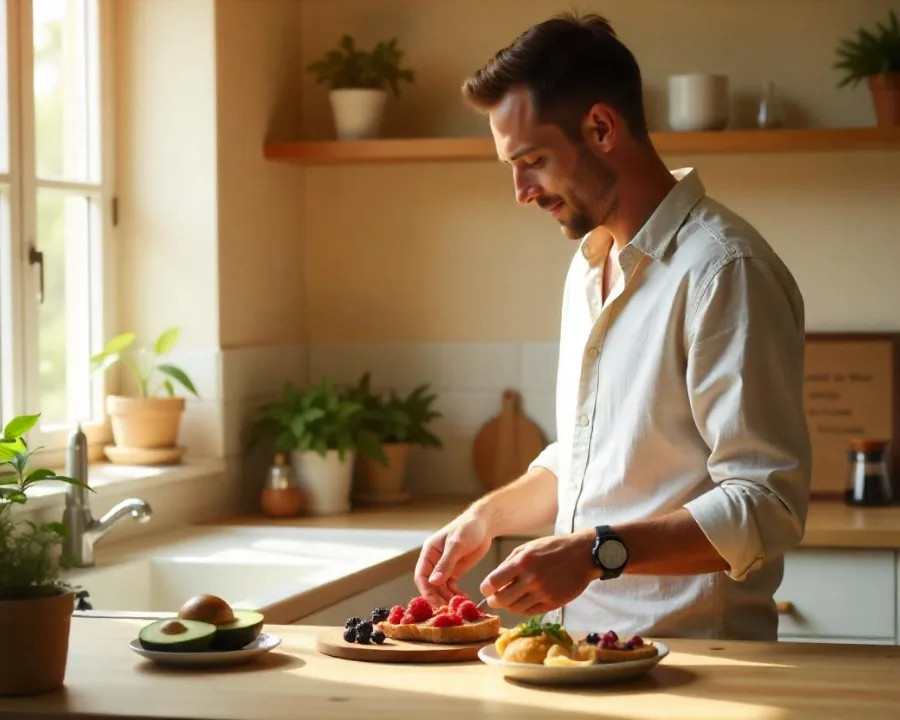
Remember, activism doesn’t require grand gestures.
“Activism can start with everyday actions—being kind, asking questions, and leading by example,” says Dr. Neal Barnard, founder of the Physicians Committee for Responsible Medicine.
Whether it's having a conversation about plant-based living or supporting cruelty-free brands, your voice makes an impact, no matter how small.
Your Vegan Journey: Keep Going, You’re Making a Difference
The journey to veganism isn’t always linear—and that’s completely okay. Whether you’re still figuring things out or have already found your rhythm, remember this: every step you take is a step toward a more compassionate, sustainable world. It’s not about perfection; it’s about intention.
Through the highs and the lows, continue to stay true to your ‘why’. Be patient with yourself. The transformation isn’t just in your eating habits—it’s in the way you show up for the planet, for animals, and for your health. Trust that each choice, no matter how small, contributes to the world you want to see. Keep going, because you’re not just changing your lifestyle; you’re changing the world, one mindful decision at a time.
As Dr. Will Tuttle, author of The World Peace Diet, puts it,
“Veganism is not a diet, it’s a way of life. It’s about living with love and compassion for all beings.”
FAQs

